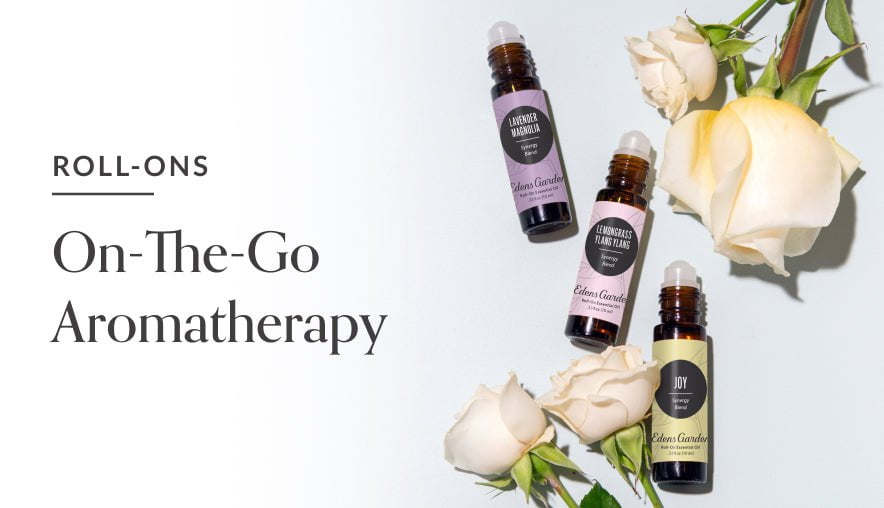Can Essential Oils Be Used As Preservatives?- AAA

At Edens Garden, we love creating DIYs for so many reasons. For one, we get to add our beloved essential oils and secondly, we can control what ingredients go into the product. And in a society where many commercial products contain questionable additives and ingredients, the ability to make effective, natural DIYs is a priceless skill to have.
Through the years we’ve found that many Edens Garden fans share our affection for DIYs, and one question that often arises amongst DIYers is, can essential oils be used as preservatives? In this guide, we’re discussing everything you need to know about preservatives, so you can make DIYs with confidence. Read on to learn more.
What Is A Preservative?
A preservative is simply an ingredient that prevents the growth of mold, yeast, bacteria and harmful microorganisms. All that’s needed for these harmful foes to grow is water, oxygen, a warm environment and organic matter. Anything made with carbon molecules is considered organic matter.
Preservatives work by stabilizing formulas and preventing microbial growth. This, in turn, increases the shelf life of products and makes them safe to use.
What’s Not A Preservative?
Ingredients that are commonly mistaken for being effective preservatives include:
- Grapefruit Seed Extract (GSE)
- Vitamin E
- Vitamin C
- Citric Acid
- Rosemary Extract
- Essential Oils
All of the above ingredients are actually great antioxidants, however, preservatives and antioxidants are not the same. Antioxidants inhibit oxidation, enhancing the stability of a product and preventing ingredients from degrading. In DIY formulations, antioxidants are very beneficial, but they won’t effectively prevent microorganism and bacterium growth.
Essential oils with notable antioxidant activity include:
- Oregano Oil
- Eucalyptus Oil
- Lavender Oil
- Tea Tree Oil
Examples Of Natural Preservatives
The following are examples of preservatives that are suitable for a variety of water-based products:
- Optiphen Plus: A preservative that works best in low pHs, Optiphen Plus is a blend of Phenoxyethanol, Caprylyl Glycol and Sorbic Acid offering broad-spectrum antimicrobial activity.
- Leucidal Liquid: Derived from fermented radishes, Leucidal Liquid is a plant-based, Whole Foods and ECOCERT natural preservative, approved for use in organic products. This preservative offers strong antimicrobial properties and antifungal activity but is often recommended to be paired with antioxidants.
- Caprylyl Glycol EHG: A Whole Foods-accepted preservative with added humectant benefits, Caprylyl Glycol EHG is recommended with additional preservatives and humectants.
- Potassium Sorbate: Often found in lotion, makeup, sunscreen and cream, Potassium Sorbate is a widely used preservative in foods, cosmetics and skincare products. This preservative is best used in acidic formulations between pH 2-6.5 in low concentrations of .15-.3%.[1]
- 190-Proof Grain Alcohol: A good alternative to synthetic preservatives, Grain Alcohol is easy-to-use. DIY products must contain 20-30% 190-Proof Grain Alcohol in order to be preserved. Any alcohol below 190-proof is not recommended for DIY formulations.[2]
- Glycerin: Glycerin must make up 50% of a formulation for it to exhibit antibacterial activity. Keep in mind that because glycerin is thick and sticky, a 50% concentration in a formula can make the resulting formulation thick and sticky as well.
How To Use Preservatives
Each preservative comes with its own set of instructions, including recommended use levels and a pH at which the preservative is effective. This information is commonly found on the ingredient’s product page. If it isn’t, ask the preservative manufacturer you purchase from for instructions on how to use the ingredient.
Here are a few things to know when working with preservatives.
pH: Most preservatives only work with a certain pH. For example, one manufacturer of Optiphen Plus states that this preservative can be used in a product with a pH of 4-8.[3] This means, that if your final formulation has an acidic pH below 4 or a basic pH above 8, the preservative will not work. For this reason, you will need to choose a preservative that works with your formula’s pH or adjust the pH of your formula using a pH adjuster.
Usage Level: All preservatives have a recommended usage level. Generally, the usage level of preservatives is very low, with the exception of 190-Proof Grain Alcohol (20-30%) and Glycerin (50%). Leucidal Liquid for example has a recommended usage level of around 2-4%.[4] This means if you’re making 100 g of a DIY room spray, 2-4 g of your final formulation will be Leucidal Liquid.
Temperature: Preservatives are often only stable and effective up to a certain temperature. Looking again at Leucidal Liquid, this preservative is stable up to 140°F. This means, if your cosmetic formulation requires heating, it will need to be cooled down below 140°F before Leucidal Liquid is added.
Solubility: Preservatives are water-soluble, oil-soluble or both. They may also be soluble in alcohols and glycols. This is important to note when choosing the preservative that’s right for your formulation.
Testing: In order to ensure your product is properly preserved, your product must undergo microbial testing. This is a necessary step if you’re planning to sell products that contain water.[5]
How To Avoid Using Preservatives
There are a few ways to forego preservatives altogether. One way is to make anhydrous products that don’t include water or water-soluble ingredients. Examples of anhydrous products would be roll-ons, diluted essential oil blends, balms, scrubs, beard oil and simple body butters. Anhydrous ingredients include butters (shea, mango, cocoa), carrier oil (Coconut, Rosehip, Argan), pure essential oils (Oregano essential oil, Tea Tree essential oil) and waxes (soy, beeswax, carnauba).
You can also make small batches of products, refrigerate them and use them within a week, before significant microbial growth occurs.
SOURCES
- Potassium Sorbate. https://www.makingcosmetics.com/PRV-POSO-02.html?lang=default
- Effective Use of Alcohol for Aromatic Blending. https://tisserandinstitute.org/effective-use-alcohol-aromatic-blending/
- Optiphen Plus. https://www.brambleberry.com/shop-by-product/ingredients/additives-and-lye/liquids/optiphen/V000582.html
- Leucidal Liquid. https://lotioncrafter.com/products/leucidal-liquid
- Microbiological Safety and Cosmetics. https://www.fda.gov/cosmetics/potential-contaminants-cosmetics/microbiological-safety-and-cosmetics











Leave a comment (Comments will be approved before showing up)